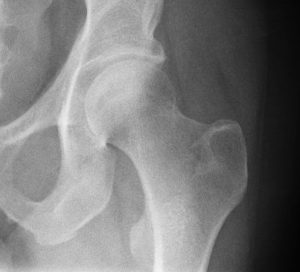Search online for “causes of hip pain,” and you’re bound to find a lot of different answers. That’s because hip joints are complex, and they also get a lot of use. Every time you sit down, stand up, take a step, climb stairs, or twist your torso, you use your hips. And if they’re irritated, inflamed, or injured in some other way, you’ll notice it.

It is possible to reduce hip pain relief with nonsurgical options. Here are some easy ways to reduce your symptoms and restore normal range of motion in the hips.
Some people worry that having long-lasting hip pain means they will need hip replacement surgery. But the truth is, most people can reduce hip pain and find relief with nonsurgical options. If you have hip pain, here are three easy steps you can take to help reduce your symptoms and restore a normal range of motion.
How Can I Make my Hip Pain go Away?
First things first: Before trying any of these steps, it’s important to have your hip pain diagnosed. Although a lot of painful symptoms can be treated conservatively, some types of hip pain require a different approach, especially if the joint structure is damaged. If you use a home remedy in these cases, you can wind up with a much more serious injury. Remember: Joint pain is your body’s way of telling you that something’s wrong. So before trying any of these options to reduce hip pain, schedule an office visit with Dr. Van Thiel to learn the cause.
Exercises to Reduce Hip Pain
When your pain is caused by overuse or repetitive use injuries — major causes of painful joint symptoms — a few simple hip stretches of the joint might be all it takes to relieve irritation and inflammation in and around the hip. Hip pain caused by arthritis also responds well to gentle stretching and non-weight-bearing exercises. A couple to try:
Double Hip Rotation
Start by lying flat on your back with your knees bent and your feet flat on the floor. Keeping your knees together, rotate your knees to one side of your body, lowering them toward the floor. Hold the position for about 30 seconds, then repeat on the other side. Aim for five to 10 reps on each side.
Knee lifts
Start by lying on your back with your legs straight in front of you. Keeping your right leg straight, bend your left knee and grasp it with both hands. Then slowly bring the knee as close to your chest as possible. Hold the position for about 10 seconds, then slowly lower it back to the starting position. Repeat with the other leg, and aim for five to 10 reps on each leg.
Use Heat and Cold
Before exercising or doing any sort of physical activity that uses your hips, take some time to warm up your hip, leg, and lower back muscles. That could mean doing a few very gentle stretches, walking in place, or taking a warm bath or shower. A warm bath can be a good idea if you need to reduce hip pain at night, too. As for cold, regular application of an ice pack is a good way to reduce inflammation around the joint. Apply the ice pack in 15-minute intervals a few times a day, wrapping the pack in a lightweight towel to protect your skin. Taking over-the-counter pain relievers along with hot and cold therapy “ramps up” the beneficial effects.
Losing Excess Pounds
Most people think of losing weight as a way to reduce knee pain, but dropping just a few pounds can go a long way toward helping you to reduce hip pain, too. Your hips are weight-bearing joints, just like your knees. When you’re overweight, your hips need to support those extra pounds, carrying them while you walk and climb stairs and lifting them when you stand or pivot. If you’re overweight or obese (and about two-thirds of us are), losing weight can be a really effective way to preserve your hips, knees, and other weight-bearing joints. Plus, it’s good for your overall health, too.
What Helps Reduce Hip Pain While Sleeping?
Stretches can be really good for relieving hip pain, but what happens if your pain occurs while you’re catching some Zs? You can’t very well stretch while you’re asleep. But that doesn’t mean there’s nothing you can do. A lot of hip pain at night is caused by pressure on your hips, especially if you sleep on your side. In that case, switching sleeping positions might help, or you might be able to use pillows between your legs or under your hip to reduce strain. If you sleep on your back, putting a pillow under your knees can help to reduce nighttime hip pain, especially if your pain involves your sciatic nerve. Sometimes, doing a few simple stretches before bed is all it takes to keep nighttime hip pain at bay.
Don’t let your hip pain keep you from doing the things you love. Dr. Van Thiel helps patients from all over Wisconsin and Illinois including Rockford, Elgin, Huntley, Dekalb, Crystal Lake, Barrington, McHenry, and Beloit to find out the cause of their hip pain, providing customized care to relieve their symptoms and improve their ability to move.




